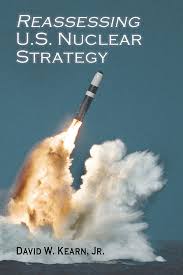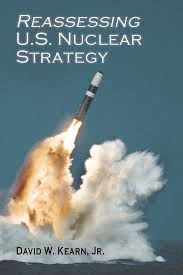
President Joe Biden has approved a secret nuclear strategy, and the New York Times reported this shift, focusing on China’s potential threat. The plan aims to promote a broad deterrent policy rather than targeting any specific threat. This revised nuclear employment guidance prepares for possible coordinated nuclear threats from China, North Korea, and Russia. However, the details remain highly classified.
This strategic shift comes as the Pentagon projects China’s nuclear stockpile will soon rival the size and diversity of the U.S. and Russia’s arsenals. Concerns over these developments have driven Washington to rethink its nuclear posture. The likelihood of a coordinated attack from these nations seems remote, but the U.S. is taking no chances. The emerging partnership between China and Russia and the conventional arms buildup in North Korea and Iran have fundamentally changed Washington’s strategic calculations.
The new strategy reflects a comprehensive approach to nuclear deterrence. It aims to address evolving threats in a complex global landscape. Despite the high level of secrecy surrounding the plan, it is known that no electronic copies exist. Only a small number of hard copies have been distributed to key officials. This level of security underscores the sensitivity and importance of the revised guidance.
Transitioning to a broader deterrent policy significantly changes U.S. nuclear strategy. Previously, U.S. policy focused on specific threats from individual nations. Now, the emphasis is on preparing for a range of potential threats. This includes the possibility of coordinated attacks despite their low probability. The strategy aims to ensure the U.S. is ready for any scenario.
The decision to revise the nuclear strategy highlights the growing concerns about China’s military capabilities. As China expands its nuclear arsenal, the U.S. seeks to maintain a balance of power. This is crucial to deter Beijing’s aggressive moves. The shift also signals to allies and adversaries alike that the U.S. is committed to maintaining its strategic edge.
Furthermore, the emerging partnership between China and Russia adds another layer of complexity. This alliance, coupled with North Korea’s and Iran’s conventional arms capabilities, poses a unique challenge. The U.S. must navigate these relationships carefully to avoid escalating tensions. The new strategy aims to address these multifaceted challenges through a unified approach.
President Biden’s approval of this secret nuclear strategy represents a pivotal moment in U.S. defense policy. The plan’s highly classified nature highlights its significance and the seriousness with which Washington views these developments. As global dynamics evolve, the U.S. remains committed to safeguarding its national security and maintaining stability in an increasingly complex world.




